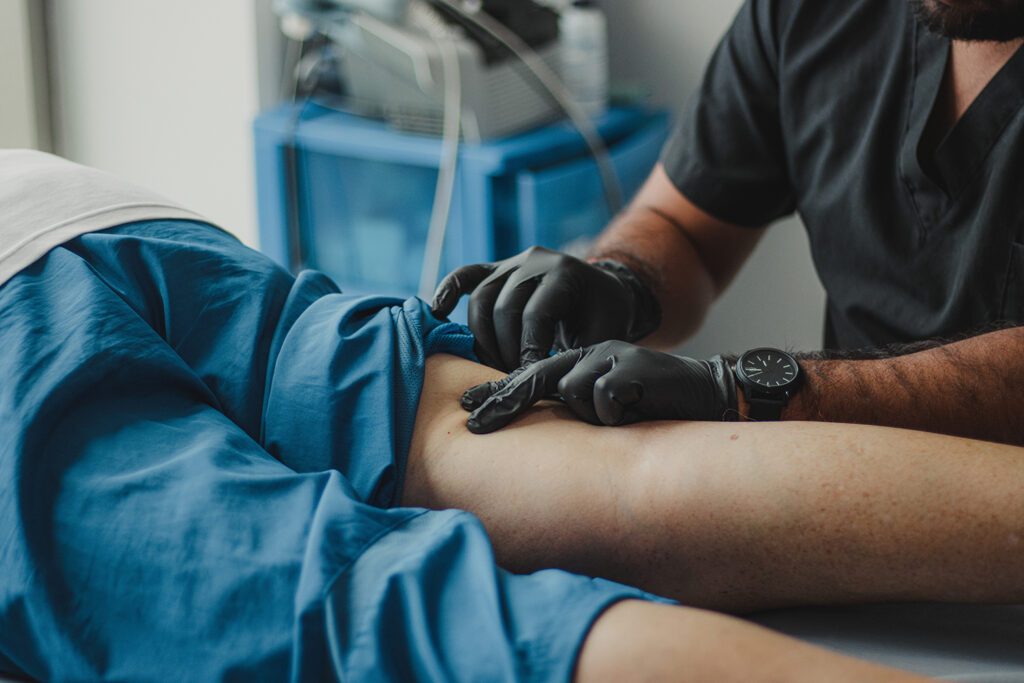
As you grow older, you may find that your knees are starting to hurt. While joint pain is not uncommon, it can begin to interfere with one’s quality of life if the knee pain continues to progress. If left untreated, it may result in the need for a knee replacement surgery.
Having any type of surgery is a little scary. You worry about scarring and how long it takes to recover, especially when you’re considering surgeries that affect your mobility and joints like a total knee replacement. Knee replacement surgery is performed to relieve pain and restore joint mobility. It involves removal of damaged bone and cartilage from the shinbone, thighbone, and kneecap. The joint is replaced artificially with materials constructed of plastics, polymers, and metal alloys. Almost 800,000 knee replacement surgeries are performed in the U.S. each year.
While there are multiple options for surgery, many patients are opting for as minimally invasive a procedure as possible, and robotic-assisted surgeries tend to be an excellent option when their condition allows.
How It Works
The goal of robotic surgery is to provide less invasive and traumatic surgery with greater precision which encourages less scarring, less pain, less blood loss, and the potential for fewer complications and a faster recovery.
During surgery, the surgeon guides the robotic arm to execute the predetermined surgical plan in the bone preparation and positioning of the implant. The technology allows dynamic positioning of joint implants to match the patient’s unique ligament balance before the first cut is made which helps surgeons to achieve the exact right position to place them. This is done through real-time aid to the surgeon via an infrared camera and optical trackers ensuring a highly accurate and precise knee replacement.
This approach often results in increased confidence in knee performance post-surgery and improved patient satisfaction and outcomes. Studies have shown that robotic-arm assisted joint replacement surgery leads to greater accuracy of implant position compared to other joint replacement procedures.
Post-Surgical Care
After your surgery, your doctor may prescribe medication to manage your pain which may include a combination of anti-inflammatories, nerve medications, and a narcotic if necessary.
Movement is critical post-surgery, so patients are asked to exercise their leg, foot, and ankle to increase blood flow and decrease chances of developing blood clots and are also prescribed physical therapy as well as a blood thinner for three to four weeks after surgery to ensure the best chances of restoring mobility long-term.
Follow-up visits are also scheduled so that the surgeon can ensure the wound and joint are healing appropriately and make any adjustments to the recovery plan as needed
.John Bailey, M.D., Ronald Disimone, M.D., and Kyle Hubler, D.O., are surgeons with UPMC Orthopaedic Care in north central Pennsylvania. UPMC Orthopaedic Care is a national leader in advanced orthopaedics offering diagnosis and treatment for a full range of musculoskeletal disorders, from the acute and chronic to the common and complex. Collaborating across UPMC’s vast network of support services for both surgical and nonsurgical treatments and a full continuum of care, UPMC’s multidisciplinary team of experts works with each patient to develop the treatment plan that is best for them. For more information on UPMC Orthopaedic Care services available at UPMC in North Central Pa., visit UPMC.com/OrthoNCPA.




